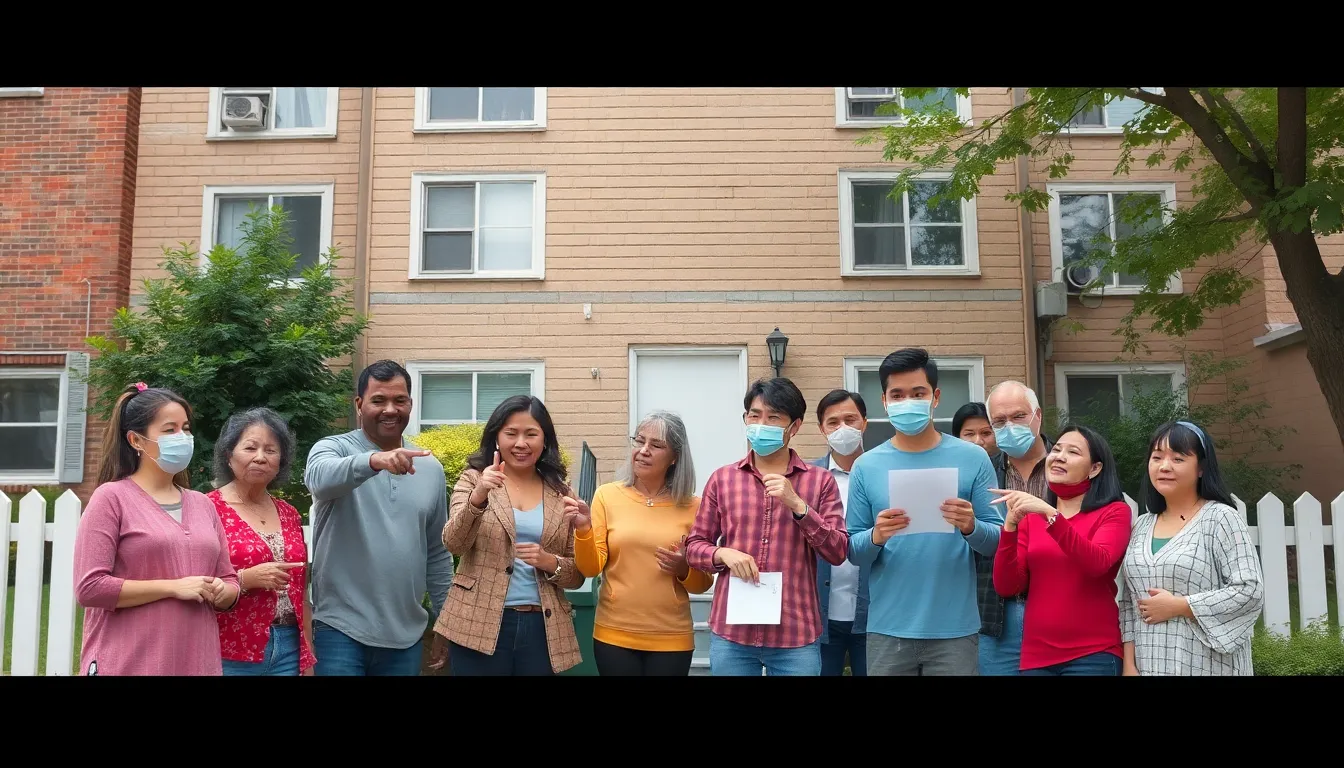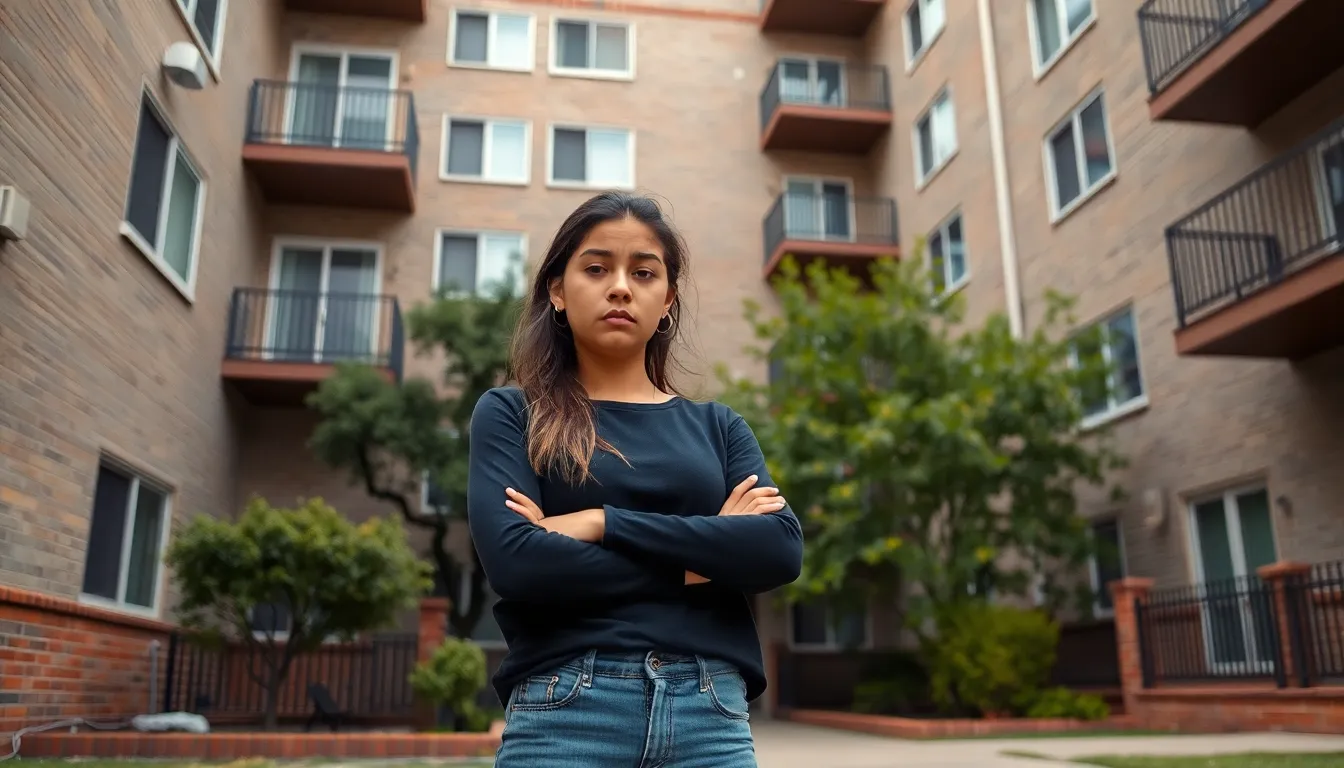Navigating the rental market during a pandemic feels like trying to find a clean bathroom at a music festival—stressful and often overwhelming. With COVID-19 shaking up the housing landscape, many renters are left wondering where to turn for help. Enter COVID-19 renter protections, the unsung heroes of the landlord-tenant saga.
Table of Contents
ToggleOverview Of COVID-19 Renter Protections
COVID-19 renter protections emerged to address the financial hardships faced by tenants during the pandemic. These protections include eviction moratoriums, which temporarily prevent landlords from evicting tenants for non-payment of rent. Various states implemented legislation to extend these protections, ensuring many renters could stay in their homes despite economic challenges.
Government initiatives also provided rental assistance programs, offering financial support directly to landlords or tenants. For example, the federal Emergency Rental Assistance program allocated around $46 billion to help renters cover overdue rent and utilities. Access to these funds proved essential for many individuals dealing with job losses or reduced incomes due to COVID-19.
Landlords, while facing their own financial pressures, received guidance on how to navigate the complexities of these protections. Some state and local governments required landlords to offer repayment plans for tenants unable to pay rent in full. Staying informed about local laws and regulations became crucial for both renters and landlords.
In addition, renters benefited from resources such as tenant advocacy organizations. These groups provided legal assistance, ensuring renters understood their rights under new regulations. Navigating the intricacies of tenant protections often requires professional guidance, which advocacy organizations readily offered.
Monitoring the latest updates on renter protections remains vital for affected individuals. Changes in policies may occur regularly, especially as the pandemic situation evolves. Awareness of local resources ensures renters can access the necessary help when navigating their housing situations.
Key Policies Implemented

COVID-19 renter protections include various policies aimed at supporting tenants. Understanding these key measures helps renters navigate challenges during the pandemic.
Federal Guidelines
Federal guidelines establish a framework for renter protections across the country. The federal government implemented eviction moratoriums that prevent evictions for non-payment during designated periods. The Emergency Rental Assistance program allocated approximately $46 billion to support tenants facing financial difficulties. This program helps cover overdue rent and utilities for eligible households. Additional federal resources include funding for tenant legal aid organizations, ensuring renters access crucial support.
State-Level Variations
State-level variations in renter protections can differ significantly. Different states implemented unique eviction moratoriums, which may extend longer than federal guidelines. Some states also provided supplemental rental assistance beyond federal funding. Local housing authorities adapted programs to address specific needs within their communities. Renters must remain informed about their state’s specific laws and resources, as these may change frequently and impact their housing stability.
Impact On Renters
COVID-19 renter protections significantly affected tenants’ lives during the pandemic. These measures aimed to alleviate financial stress and provide stability.
Short-Term Effects
Renters immediately felt the impact of eviction moratoriums. Many avoided losing their homes due to non-payment of rent. Emergency Rental Assistance programs enabled countless households to cover overdue rent and utilities. This direct financial support helped keep many renters afloat during a period of economic uncertainty. Additionally, access to legal assistance through advocacy organizations empowered tenants, allowing them to understand and assert their rights effectively. Such resources fostered a sense of security for renters grappling with sudden job losses and decreased income.
Long-Term Consequences
Long-term, the effects of COVID-19 renter protections shape the housing market. The eviction moratoriums delayed financial consequences for landlords, creating a backlog of unpaid rent. This situation could lead to future rent increases as landlords seek to recuperate lost earnings. Furthermore, the pandemic emphasized the fragility of housing stability, prompting discussions on the need for stronger, more permanent renter protections. Changing tenants’ expectations around housing security may result in greater advocacy for permanent policies. Overall, renters could experience increased homelessness or housing instability if such protections do not persist.
Challenges Faced
COVID-19 renter protections present multiple challenges for tenants navigating the housing market. Confusion around compliance and awareness complicates the situation further.
Compliance Issues
Compliance issues arise when landlords misunderstand or incorrectly implement renter protections. Landlords sometimes fail to adhere to eviction moratoriums, placing tenants at risk of unlawful eviction. Complexity in federal and state guidelines often leads to discrepancies in enforcement. Renters face difficulties when they cannot verify their landlords’ compliance with aid programs. Local housing authorities may lack the resources to effectively monitor adherence, which creates confusion and instability for tenants. Ensuring compliance requires better communication between landlords, tenants, and housing organizations.
Awareness Among Tenants
Awareness among tenants about their rights remains a significant hurdle. Many renters are unaware of the specific protections available to them under COVID-19 guidelines. Misconceptions about eviction practices contribute to tenants’ anxiety regarding housing stability. Limited outreach efforts by local governments and tenant advocacy organizations result in many renters missing out on resources. Some tenants hesitate to seek help due to fear of retaliation from landlords. Fostering education about rights and protections can help empower renters, enabling them to navigate challenges more effectively.
Future Outlook
Renter protections continue to evolve, reflecting the ongoing challenges in the housing market. Adjustments may occur as policymakers reassess the financial landscape and tenant needs post-pandemic. Moreover, discussions on permanent protections gain traction, emphasizing sustainability for renters.
Many states may consider extending eviction moratoriums and implementing supplemental rental assistance to adapt to changing circumstances. Expanded access to legal resources remains essential for empowering tenants, ensuring they understand their rights. Through advocacy, organizations can reinforce the importance of compliance, encouraging landlords to adhere to protective measures.
Local governments often play a critical role in outreach efforts, targeting tenants who may be unaware of their options. Effective communication can bridge gaps between renters and available resources, enabling informed decision-making. In addition, incorporating educational programs about tenant rights can help mitigate fears associated with retaliation from landlords.
Financial implications for landlords also warrant attention. Delayed rental payments may lead some landlords to raise rents after moratoriums end. These potential increases can exacerbate housing instability among vulnerable populations if not carefully managed. Therefore, stakeholders must collaborate to balance the needs of tenants and landlords.
Ultimately, the future of renter protections hinges on proactive measures that consider the lessons learned during the pandemic. Sustained dialogue among policymakers, legal advocates, and community organizations can facilitate improvements in housing stability. Focused efforts will be crucial in mitigating risks that arise as the market adapts to post-COVID realities.
COVID-19 renter protections have emerged as a lifeline for many tenants navigating unprecedented challenges in the housing market. These measures not only provide immediate relief but also highlight the ongoing need for awareness and education regarding tenant rights. As the landscape continues to shift, it’s vital for renters to stay informed about their specific protections and resources available in their state.
The future of housing stability hinges on effective communication and collaboration among policymakers, advocacy groups, and tenants. While the pandemic has exposed vulnerabilities within the rental market, it also presents an opportunity to create more robust and lasting protections for renters. Continued dialogue and proactive measures will be essential to ensure that all individuals have access to safe and stable housing in the years to come.







